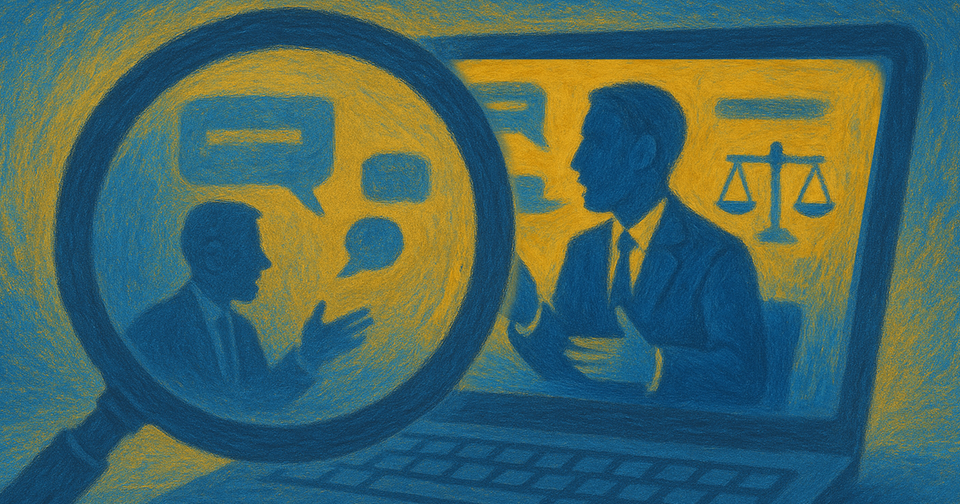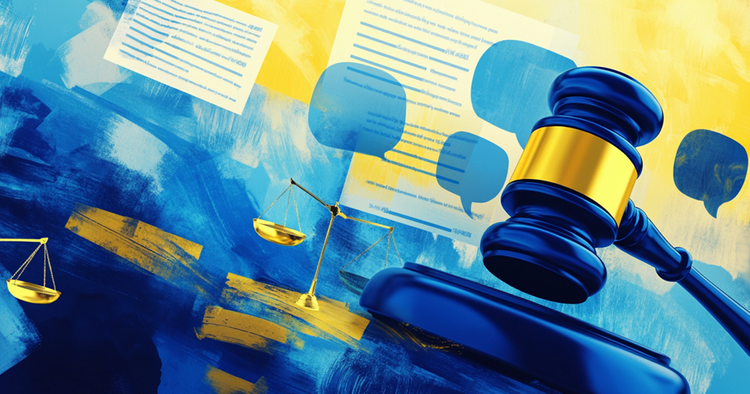The Hidden Language of Depositions—And How to Use It Strategically

Imagine a deposition where a witness answers every question cleanly, but hesitates ever so slightly when a sensitive topic comes up. Their tone shifts. The rhythm of their speech changes. These subtle cues can flag major issues, but they’re easy to miss in real time.
That’s a hypothetical example, but seasoned attorneys know how often nonverbal and paraverbal signals reveal far more than words alone. Still, when multitasking through a deposition, tracking those cues without missing critical testimony is a tall order.
Smart legal tools can change that, empowering attorneys to use their instincts and giving them opportunities to spot and analyze the nuance of deponent responses.
Why Communication Patterns Matter in Legal Depositions
Communication in depositions is more than just verbal; it’s also behavioral. According to both psychological and legal research, tone of voice, speech cadence, and physical movements all shape how testimony is received and interpreted. These cues can reflect nervousness, truthfulness, discomfort, or even deceit, and they’re often more revealing than the content itself.
But in a deposition, even the most skilled attorney may miss these signals. The reason for this is scientific: cognitive load studies confirm that multitasking actually diminishes attention to nuance. When you're juggling exhibits, objections, and strategy, parsing a witness’s body language in the moment isn't always realistic.
This is where technology steps in as a strategic support, though not a substitute. Features like real-time transcription, video playback, and transcript tagging help attorneys revisit moments where delivery didn’t match the words. With the right tools, you can catch what your gut noticed, but your memory didn’t record.
Let the Transcript Catch the Words While You Watch the Witness
Trying to listen, observe, annotate, and ask questions all at once? That’s neurologically—and logistically—inefficient. And that’s where tech comes in. Instant transcription gives attorneys the freedom to do what machines can't: read the room.
You gain space to notice a witness’s microexpressions, posture shifts, or emotional changes. Because the transcript unfolds live, you don’t have to wait hours or days to find that key moment again. Instead, you can tag it instantly. Many attorneys use color-coded flags to mark different response types on the fly: evasive, overly confident, emotionally charged, etc.
When paired with features like picture-in-picture video in Session Review, you’re no longer forced to choose between listening and watching. You get a synchronized view of what was said and how it was said. That’s a game-changer, especially when preparing for trial or sharing clips with a colleague who wasn’t present for the depo.
Making Cues Actionable with Smart Review Techniques
Catching nonverbal cues is one thing. Organizing and using them effectively is another.
Annotation features help you highlight noteworthy answers as the deposition unfolds. Over time, many attorneys develop their own shorthand—a personal taxonomy that enhances organization across cases. For example, a red flag might mark a contradiction, while yellow could indicate a shift in tone or hesitation. It’s a simple habit that builds a searchable roadmap for later.
Once the session ends, flagged and color-coded notes can be reviewed in isolation or alongside video, speeding up prep time and helping legal teams zero in on potential vulnerabilities or inconsistencies. This practice streamlines workflows and sharpens overall case strategy.
Legal Technology that Helps You See the Full Picture
Prevail’s platform does much more than record testimony. It empowers you to work more effectively during the moments that matter. Every flag and note becomes part of a searchable record you can return to with purpose. Instead of relying on shorthand scribbles or half-remembered moments, you’re creating a digital trail of what stood out in real time—and why.
Session Review lets you zoom in on key moments, save them as video clips, and use flags and filters to organize them by theme or tone, for example. You can watch the conversation unfold again, this time with more context. Select picture-in-picture view and you catch what transcripts miss: the raised eyebrow, the shifting body language, the flicker of uncertainty as a tough exhibit appears.
These tools are built for working attorneys who need speed without sacrificing precision. They turn scattered observations into a focused, searchable, strategic advantage.
The Communication Cue Checklist: What to Watch For
Keep this on hand as a mental (or physical) checklist during any deposition. The more you flag in real time, the stronger your follow-up.
You don’t need to catch everything live, but flagging the cues that stand out will sharpen your post-deposition review and strengthen your approach to the case.
Make Depositions Work For You
Strong depositions hinge on more than what’s said. How it’s said—and how it lands—can shift the direction of a case. Tools like Prevail give attorneys the space to pay attention to those moments without falling behind on everything else. When you can flag a hesitation or track a shift in tone right as it happens, you’re staying organized and building a smarter foundation for follow-up. It’s a way to work more attentively, with less guesswork and more intention.
Ready for smarter depositions? Book a demo today and experience how Prevail can enhance your legal workflows.




